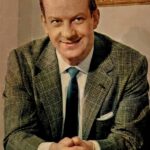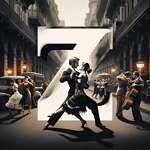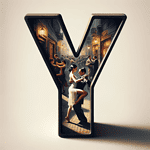Rosendo Mendizábal, born on April 21, 1868, in Buenos Aires, Argentina, is one of the few Afro-Americans who are remembered for their contributions to the tango landscape, earning a place in history as a composer and pianist of the early Guardia Vieja era.
Early Life and Musical Journey
Rosendo Mendizábal, born into a family of Afro-Argentine descent with a comfortable financial position, inherited a substantial sum at the age of seven. This inheritance paved the way for his musical pursuits, culminating in his piano professorship at a conservatory. Renowned for his exceptional piano skills, Mendizábal was known for his unique use of the left hand.
Tango and the Z Club Connection
Mendizábal’s association with tango was not only musical but also social. Once a month, he performed for an exclusive group of approximately 40 friends at the Z Club. On these occasions, the entry was restricted, creating an intimate setting.
In an era without copyright laws, it was customary for a musician to dedicate a newly premiered piece to a patron. Mendizábal’s famous “El entrerriano” is said to have been dedicated to Ricardo Segovia, a club member born in Entre Ríos.
Life as a Pianist and Composer
Despite squandering his inheritance, Rosendo Mendizábal made a living from a diverse range of venues, from seedy locales to dance academies frequented by a more affluent clientele. Regarded by some as the finest pianist of the Guardia Vieja, his most famous composition, “El entrerriano,” is often considered the first tango notated between 1897 and 1898. Sadly, after battling illness and near-blindness, Mendizábal passed away in Buenos Aires on June 30, 1913.
Notable Works of Rosendo Mendizábal
Explore the richness of Mendizábal’s musical repertoire, including iconic tangos such as “El entrerriano,” “México,” “Matilde,” and “Contraflor al resto.” These compositions showcase his diverse talents and innovative approach to tango during the Guardia Vieja period.
Legacy and Impact on Tango Today
Despite the passage of time, Mendizábal’s influence endures. Tango enthusiasts still dance to the rhythm of his compositions at Milonga Dance Events.
Sebastián Piana, another respected figure in tango, admired the modernity present in Mendizábal’s works, although many have unfortunately faded into obscurity.
10 Most Important Tango Songs by Rosendo Mendizábal
- “El entrerriano”
- Recording Year: 1897-1898
- Details: Regarded as the first notated tango, “El entrerriano” holds historical significance and remains a favorite for its timeless appeal.
- “México”
- Details: Capturing Mendizábal’s musical innovation, “México” is a captivating composition that stands the test of time.
- “Matilde”
- Details: “Matilde” showcases Mendizábal’s diverse talents, contributing to the richness of his musical repertoire.
- “El torpedero”
- Details: An energetic composition, “El torpedero” reflects Mendizábal’s ability to infuse tango with dynamism and flair.
- “Contraflor al resto”
- Details: Known for its distinctive style, “Contraflor al resto” is a testament to Mendizábal’s creative approach to tango.
- “Tres arroyos”
- Details: “Tres arroyos” showcases Mendizábal’s ability to evoke emotions through his compositions, making it a beloved piece among tango dancers.
- “Don Santiago”
- Details: A composition that reflects Mendizábal’s melodic prowess, “Don Santiago” continues to charm dancers with its musical elegance.
- “Tigre hotel”
- Details: “Tigre hotel” is a tango that showcases Mendizábal’s ability to create atmospheric and evocative musical landscapes.
- “Don José María”
- Details: With its melodic nuances, “Don José María” remains a testament to Mendizábal’s skill in crafting memorable tango compositions.
- “Viento en popa”
- Details: “Viento en popa” exemplifies Mendizábal’s ability to create rhythmic and dynamic tango pieces that resonate with dancers to this day.
Note: The specific recording details, orchestra, and singer information for some of Mendizábal’s compositions may not be available due to the historical nature of the content.
Frequently Asked Questions about Rosendo Mendizábal
What is the historical significance of Rosendo Mendizábal in the world of Argentine Tango?
Rosendo Mendizábal is celebrated as a pioneering figure in the history of Argentine Tango. Born in 1868, he is renowned for composing “El entrerriano,” considered the first tango notated, marking a crucial moment in the evolution of tango music.
What led to Mendizábal’s financial struggles, and how did he sustain himself as a musician?
Despite inheriting a considerable sum at a young age, Mendizábal faced financial difficulties and eventually squandered his inheritance. He sustained himself by performing in various venues, ranging from seedy locales to academies and dance halls frequented by diverse audiences.
How did Mendizábal’s compositions influence tango dancers of his time, and why do they still resonate today?
Mendizábal’s compositions, characterized by their modernity and distinctive style, were popular among tango enthusiasts of the Guardia Vieja era. Today, dancers appreciate the historical significance and timeless appeal of his works, keeping them alive in milongas and tango events.
Conclusion
Rosendo Mendizábal’s legacy lives on through the notes of his tangos, which continue to echo through milongas and tango events. As we celebrate his contributions to the rich tapestry of Argentine Tango, let’s keep his music alive on the dance floor, bridging the past and present.
Notable Sources
- “Rosendo Mendizábal” by Marinha Villalobos
- Reference: Consultado el 1 de octubre de 2010.
- “Mujeres y hombres que hicieron el tango” by José Gobello
- Page: 167
- Buenos Aires. Centro Editor de Cultura Argentina. ISBN 950-898-081-8.
- “El tango” by Horacio Salas
- Page: 94
- Buenos Aires. Editorial Planeta Argentina S.A. ISBN 950-37-0219-4.






